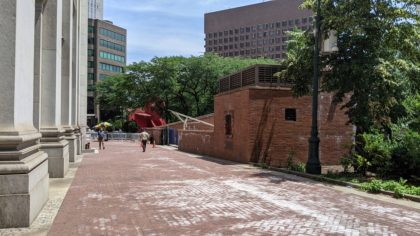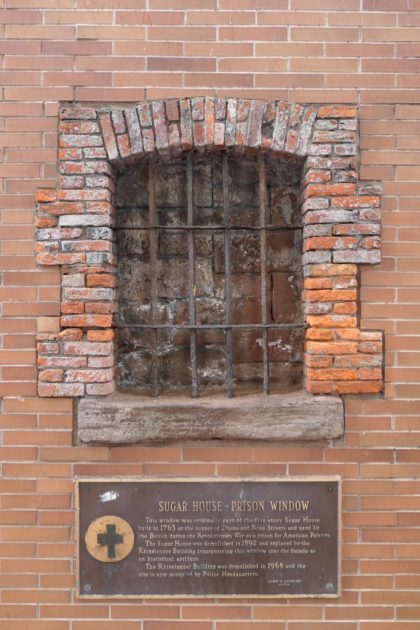If These Walls Could Talk…
The History of Tribeca Buildings database—compiled from Tom Miller’s posts at Daytonian in Manhattan—has a new entry: the Rhinelander Sugar House, most recently a Where in Tribeca? entry. If you enjoy these, and you will, then you should definitely check out his website, which also has write-ups about buildings all over the island. And don’t miss his book, Seeking New York: The Stories Behind the Historic Architecture of Manhattan—One Building at a Time.
Henry Cuyler came from a wealthy Dutch family and in 1763 was highly involved in the importation and refining of sugar. That year he erected a substantial building at the corner of Prince Street (later renamed Rose Street, and finally William Street) and Duane Street. His stone and brick sugar house was both a refinery and a warehouse for the storage of sugar and molasses.
For Colonial New York, the sugar house was massive and impressive. At six stories tall, it was among the largest structures in the colony and dominated the buildings around it. Cuyler was not without competition in the sugar business. It was a highly lucrative industry and by the time he erected his sugar house, there were several others in lower Manhattan.
Unfortunately for the Cuyler family, they chose the wrong side in the coming war of revolution. Instead of backing the rebellious gang set on upsetting the government, they remained Loyalists. That did not work out well for them. Following the Revolution, the Act of Forfeiture was passed. Loyalists were banned from the state under penalty of death “without benefit of Clergy” and their property sold at auction.
Enter the Rhinelander family and the rest of the story, which in the end becomes more urban legend than history.














